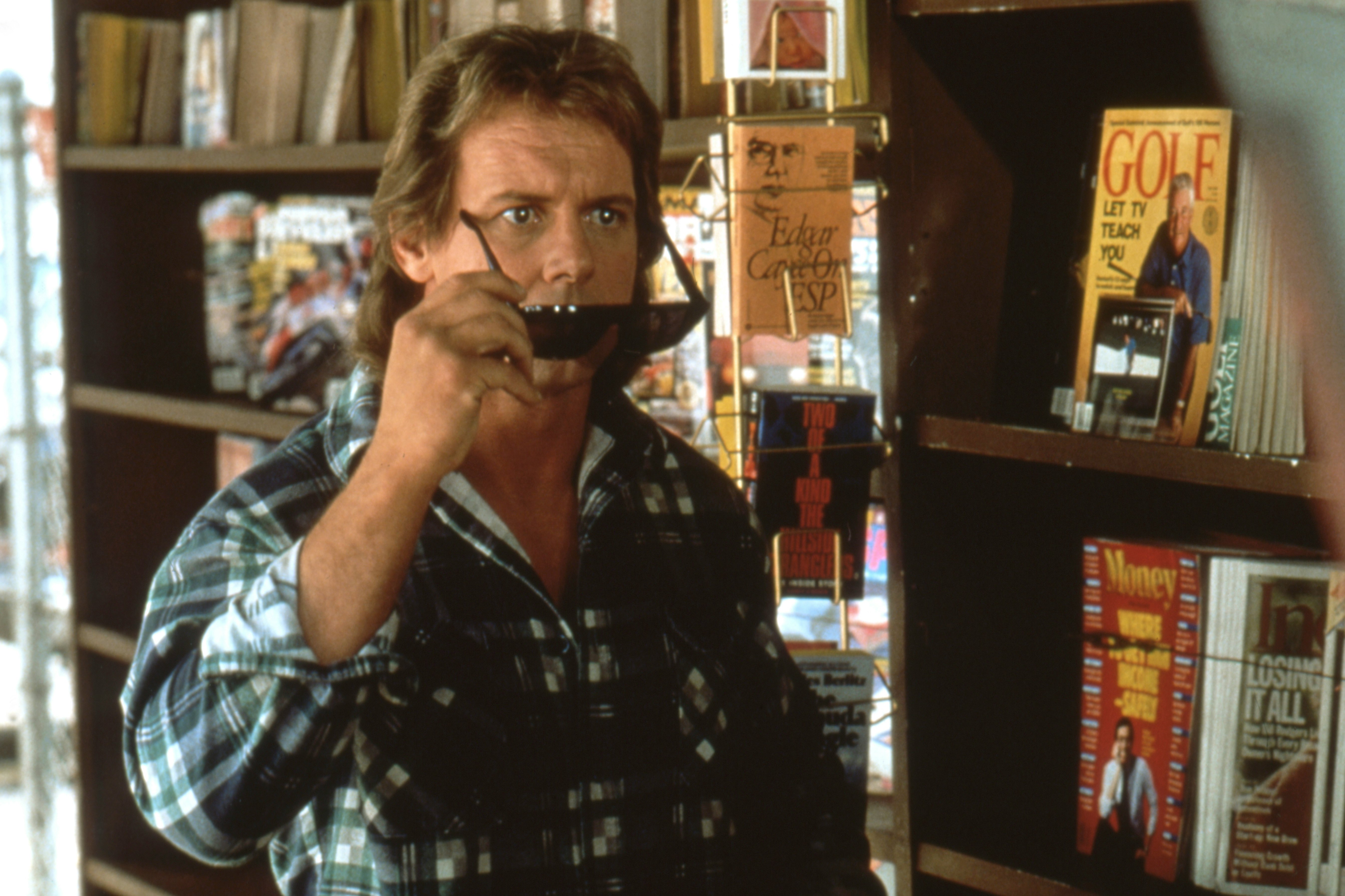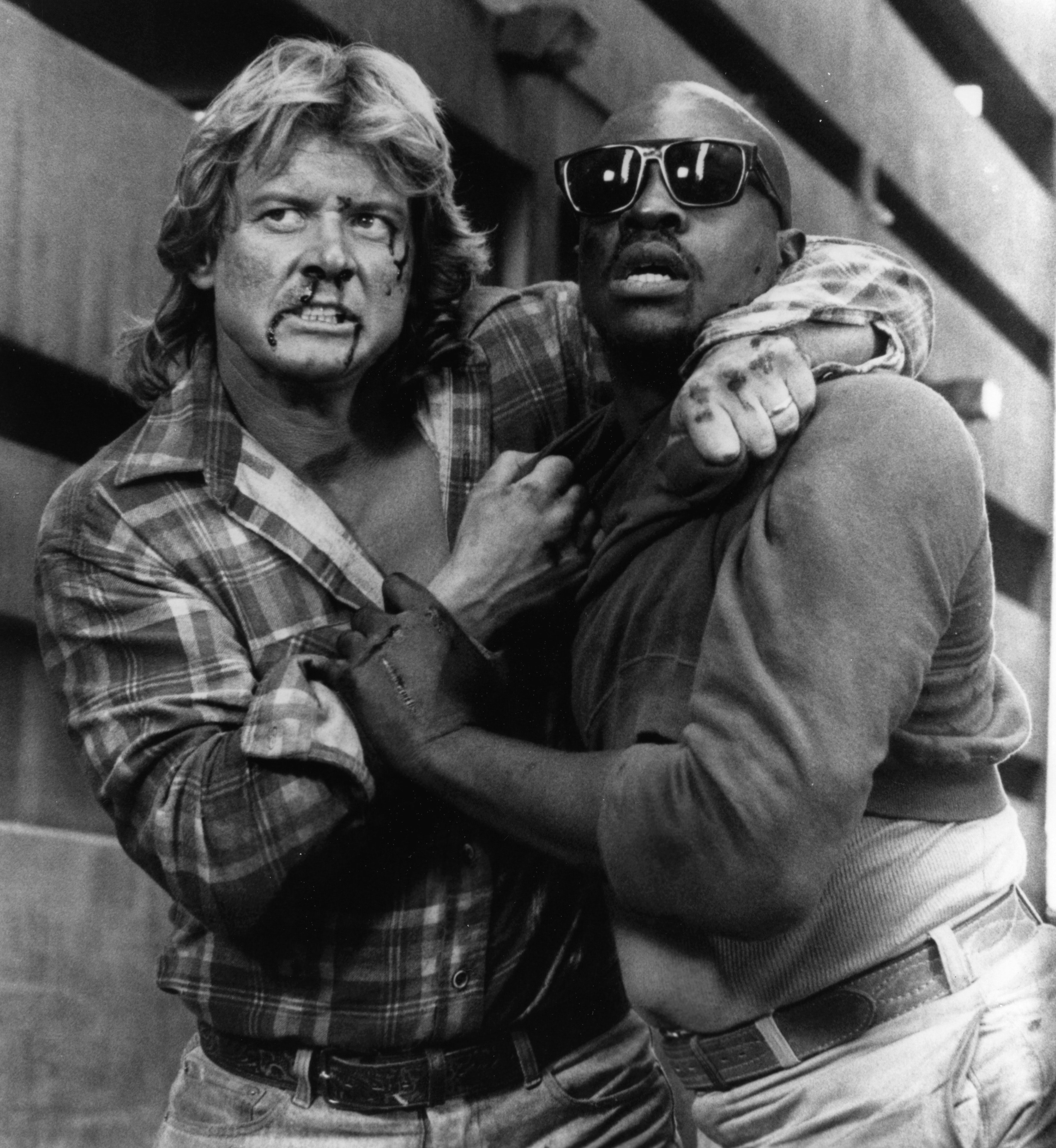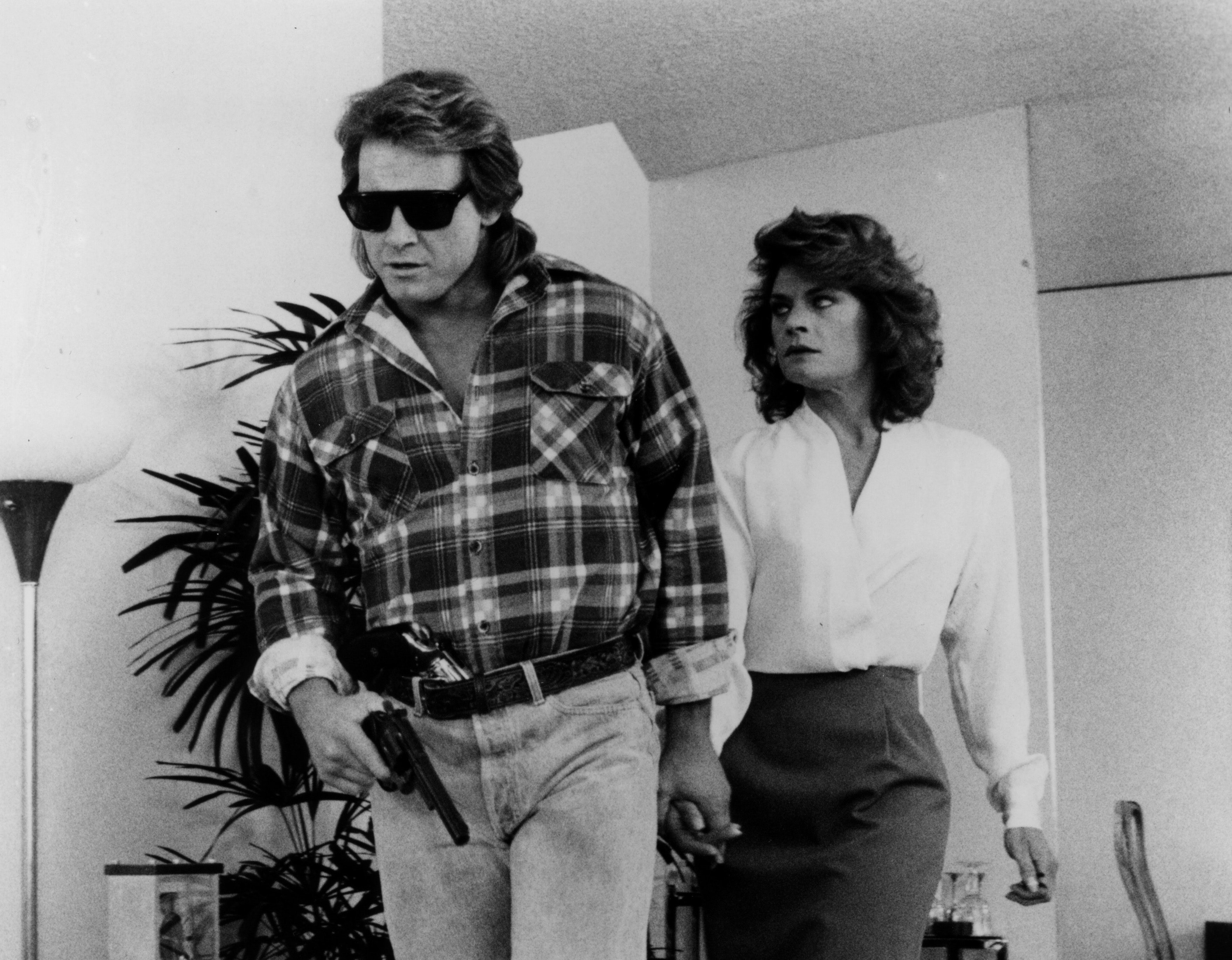
Imagine a world in which climate change is killing the planet, where police brutality is rampant, and only the richest of the rich enjoy comfort and stability. In 1988, John Carpenter looked at the world as he saw it and turned the depressing status quo into a chilling, sci-fi thriller with just a touch of absurdity. But in 2023, the cult classic They Live is even more relevant, to the point where watching it today may actually be more powerful than it was back then.
Thirty-five years ago, on November 4, 1988, They Live hit theaters for the first time and made us all see that yes, something about everyday life is very, very scary.
They Live is derived from Ray Nelson’s short story “Eight O'clock in the Morning,” published in The Magazine of Fantasy & Science Fiction in the November 1963 issue, just one month before the first installment of Dune — “Dune World” — was published in Analog. In print form, science fiction was becoming more experimental in the 1960s, with more overt and complex political commentary, paired with more literary, and sometimes less literal aesthetics. If Nelson’s short story can fit into a subgenre, it’s probably best to think of it in close connection with some of Philip K. Dick’s short stories of the 1950s.
In both the film and the story, the vibe of They Live is something you might find in a Dick story. The paranoid loner who discovers a horrible alien conspiracy at the heart of all the ills of the world could describe probably about 80 percent of short stories by Philip K. Dick (or Harlan Ellison) so it makes perfect sense that They Live created a smash in the 1980s, the same era of Blade Runner (1982) and The Terminator (1984) — artistic films derived from older science fiction.

But what makes They Live perhaps more interesting than those two movies is that it intentionally lacks an escapist quality. John Carpenter’s cinematic style in They Live makes the grittiness of Blade Runner and The Terminator feel affected and slick. This is a film that begins grounded in reality, complete with characters who don’t look like movie stars. Pro-wrestling star Roddy Piper plays the lead character, “Nada,” with just the right amount of hidden pathos, but also a certain kind of realistic goofiness. Even if you’ve never seen They Live, you’re probably aware of the famous moment when Piper says, “I have come here to chew bubblegum and kick ass... and I'm all out of bubblegum.” But, They Live isn’t like Evil Dead in which characters are dropping campy lines like this left-and-right. That line was improvised by Piper, and in a sense is a follow-up to an earlier line when he says plainly, “It figures it’d be something like this.”
The something like this that he refers to is the fact that the ruling class of people on Earth are actually all creepy aliens with gross skeletal faces. To see their true nature, you need a special pair of sunglasses, which renders the world in black and white and reveals the basic truths of how humans are manipulated by the media, the government, and each other. The black-and-white aesthetic of “the truth,” gives They Live the ability to dip into an older kind of sci-fi trope, letting the movie deliver what you could argue was its central thesis: what if Invasion of the Body Snatchers was real?
Down on his luck and working at a construction site, Nada encounters this truth gradually, mostly because he’s working next door to the burgeoning resistance movement. They Live actually has perfect pacing for its first two-thirds, because until Nada puts on the sunglasses, everything just feels like a slightly off-kilter slow-burn thriller.

The movie also understands the sheer absurdity of its premise, because asking somebody to put on a pair of sunglasses in order to see cloaked alien invaders would be super difficult in real life. In the film’s most over-the-top fight scene, Nada and Frank (Keith David) brawl pro-wrestling style, which vacillates between being really uncomfortable to watch and brilliant simultaneously. Later, after Frank puts on the sunglasses, he wonders if the aliens have “always been with us,” causing all the ills of history.
And it’s in this idea of blaming the aliens for everything that the movie contains its most biting commentary. While on the run, Nada briefly kidnaps Holly Thompson (Meg Foster) who works for a cable conglomerate. Everything about this kidnapping creates a kind of non-realism that allows Piper to drop lines like “I’m afraid I must insist,” as he’s casually holding Holly at gunpoint. But, the thing is, Holly is playing a very long game, and by the time we get to the end of the movie, we realize that the aliens can’t really take over the world without the help of a small percentage of humans. Holly’s heel turn in the climax of the film is not only shocking but meticulously laid out in all of her previous scenes. Magic sunglasses can’t reveal the evil of humans.
Interdimensional aliens aren’t responsible for the horrors of real life, and in the universe of They Live, the aliens aren’t entirely to blame, either. Humanity might be capable of great heroism and kindness, but what John Carpenter made clear with this masterpiece is that humans can become monsters, too. All they need is an excuse.







